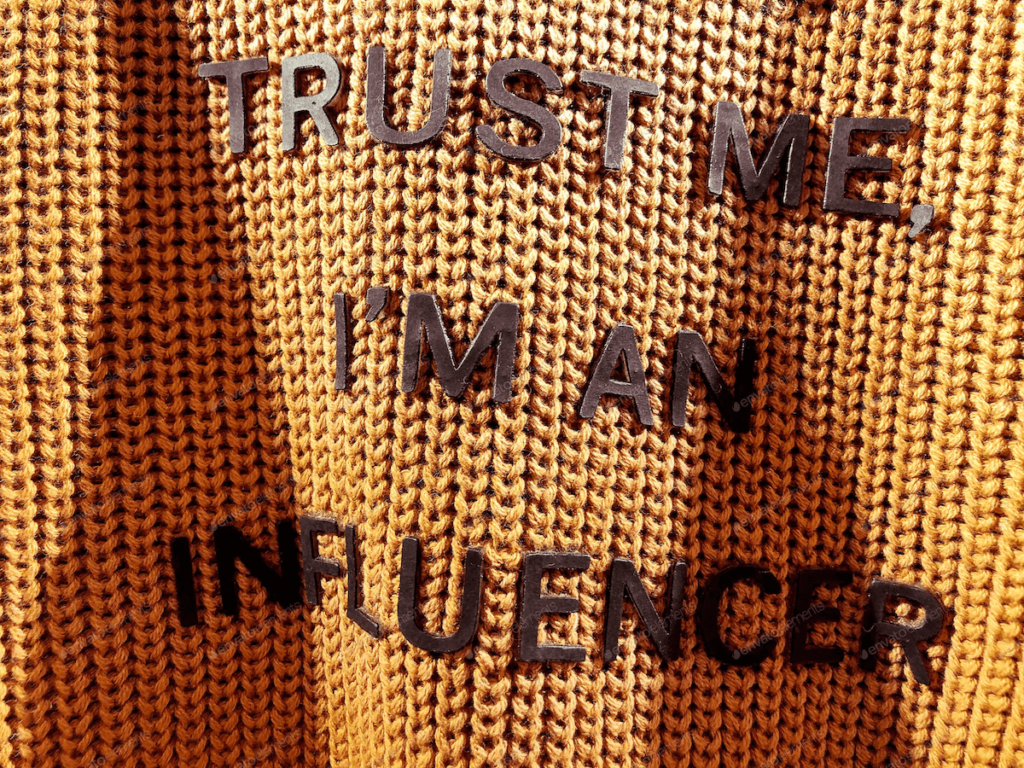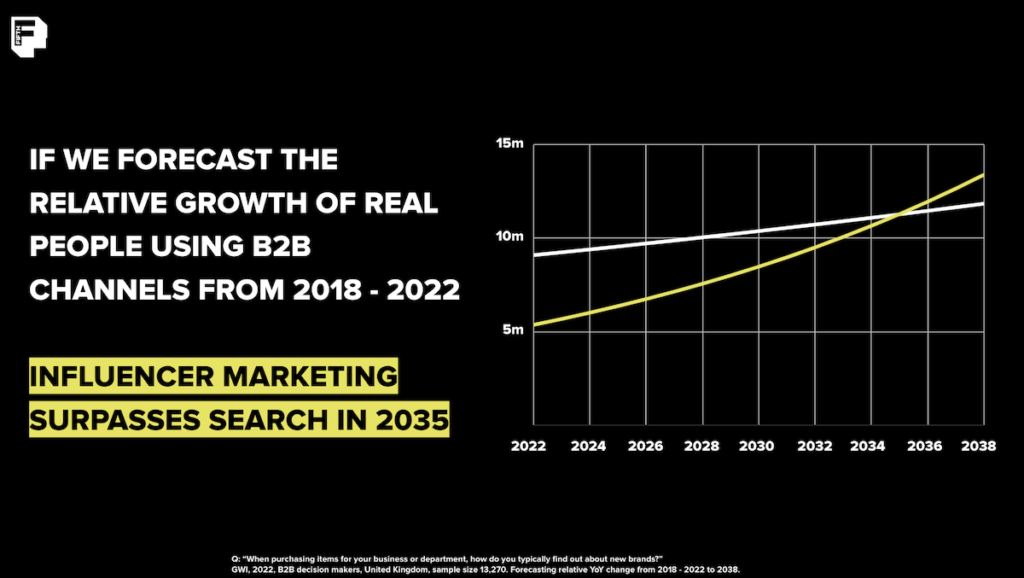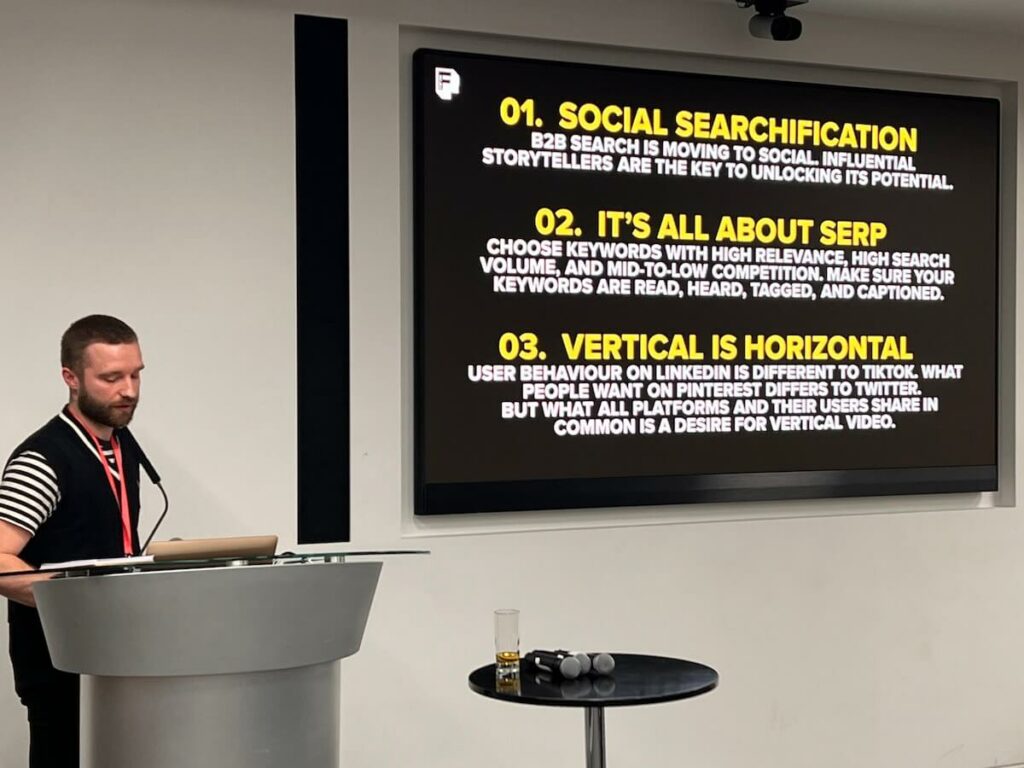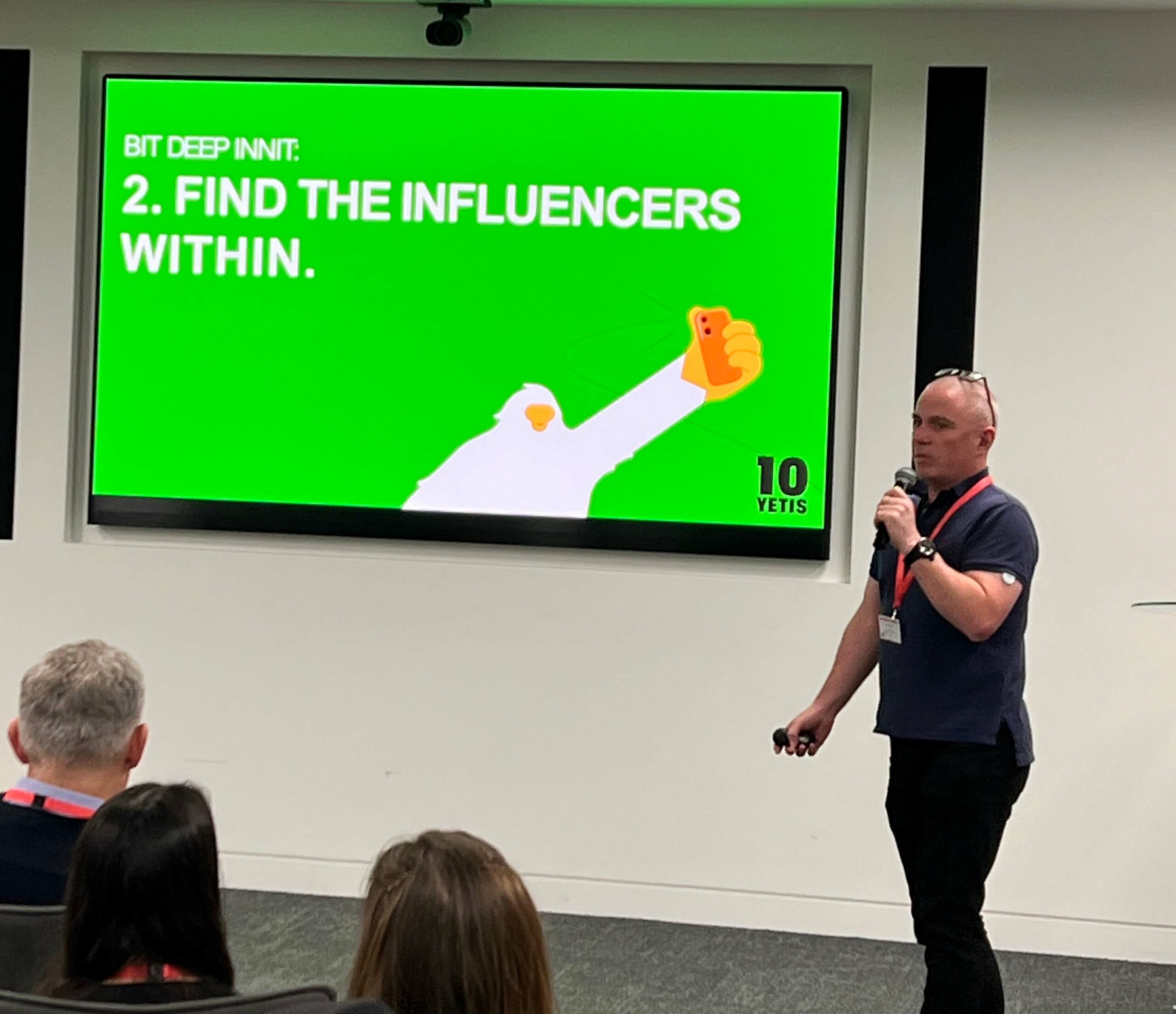
Discover why the dawn of B2B influencer marketing is already upon us and how we must adapt to stay aligned with evolving consumer demands.
Influencer marketing has been a mainstream source of growth for B2C brands for years. But there’s been a shift in recent times, with marketers recognising its value within the realms of B2B.
Forbes calls it “one of the marketing industry’s most significant transformations of the modern era”. A statement that’s hardly surprising when a Nielsen study with TapInfluence revealed that B2B influencer marketing leads to eleven times the ROI of traditional advertising.
But what does it mean for B2B brands over the next couple of years? And how can you adapt to make influencer marketing (and the emerging de-influencer trend) integral to your B2B content marketing strategy?
They were two questions covered at our recent B2B Content Marketing Summit. Let’s explore.
The current and future state of B2B influencer marketing
B2B discovery is changing drastically. It’s a dynamic Jordan Carroll, the Global Innovation Director at THE FIFTH Group, believes “brands are sleeping on”.
His talk about the future of B2B influencer marketing at the B2B Content Marketing Summit offered a clear snapshot of the seismic shift already happening in today’s market.
In essence, search engines remain the most popular method of B2B brand discovery. However, as we look to aim our offering around the next crop of decision-makers called “the BETAs” – the first cohort of digital natives aged 21 to 40 year-olds – we need to readjust our approach.
The current search data doesn’t give us the context to forecast. To look into the future, we must first look into the past.
When we take the data from GWI and LinkedIn’s ‘B2B Decision Makers’ report to forecast the relative growth of real people using B2B channels from 2018-2022, B2B influencer marketing surpasses search in 2035.

So, why is favourability shifting towards influencer marketing?
In Jordan’s words, “The enshittification of search meets the searchification of social.”
The term “enshittification” was featured in an article by John Naughton in The Guardian. It’s an idea that when Google first began its meteoric rise to the top in 1998, it was an elegant and useful tool designed to improve our lives. Knowledge or trusted contacts were just a click away. You typed in a query and got a list of websites that were based on a fairly automated per-review called PageRank.
But now the first page of a search for a product or service offers a sea of sponsored items. As users and advertisers, we’re all trapped in the “enshittification” of the internet, bombarded by adverts garnering inadequate results.
And the stats don’t lie. In 2013, the average ‘Real’ search result link began at 375px down the page. Compare it to 2020, and the average dropped to 616px because of ads. Unfortunately, featured snippets try to fast-track information by presenting singular universal truths, led by question bias.
The reality is that behaviours are changing among this BETA audience, with the giants of social media coming to the forefront. The same report from GWI revealed that TikTok grew 60% as a favoured platform in the UK in 2022 for brand and product discovery with B2B audiences.
“In our studies, something like almost 40 per cent of young people, when they’re looking for a place for lunch, they don’t go to Google Maps or search. They go to TikTok or Instagram.”
Prabhakar Raghavan – Google Senior Vice President
So, what does this mean for your business?
When it comes to creating long-form, evergreen content to serve your target audience via Google, there’s still value. After all, a short social post only tells half a story. There are several touchpoints in the B2B buyer journey, so the need for other in-depth pieces of content will always be there.
Instead, it’s a matter of reframing your take on the current landscape and seeing it as an opportunity to expand your audience and create a multi-channel strategy.

The rise of social “searchification” is real. As B2B brands, we can harness the power of influential storytelling and unlock its potential by leveraging the nine faces of influence:
- The artist
- The journalist
- The brand
- The activist
- The tastemaker
- The humourist
- The collective
- The creator
- The expert
It’s also vital to think about our social strategies in the same sense as our approach to SEO. With every piece of social content choose keywords with high relevance, high search volume and mid-to-low competition.
“Make sure your keywords are read, heard, tagged, and captioned.”
Jordan Carroll – the Global Innovation Director at THE FIFTH Group
Finally, despite contrasting user behaviours, there’s a common desire for vertical video across all social channels. Again, it’s a case of developing a multi-channel approach and remembering that you’re ultimately a person trying to make a connection with a person.
It doesn’t matter whether you’re a B2C brand selling a pair of socks or a B2B company providing a service, people buy into people.
Be aware of the de-influencer movement
Besides the shift in search behaviours and its role in the B2B influencer marketing space, we’re also seeing the emergence of the de-influencer trend.
At the B2B marketing summit, the CEO of 10 Yetis, Andy Barr, labelled it “The timely death of overly-polished, brand-sanitised content”.
What is de-influencing?
Influencers are a big part of marketing today. For years, we’ve seen Love Island contestants telling us what to wear, athletes showing us their meal prep kits, and Hollywood actors sipping their branded alcoholic beverages. But de-influencing is flipping the script on normal methods of social media marketing.
In its rawest form, de-influencing is about people telling their audiences what not to buy or recommending cheaper alternatives.
It’s stemmed from the cost-of-living crisis, with people feeling the pinch. But more importantly, the shift in our behaviours as consumers since the pandemic.
Whether it’s LinkedIn, Instagram or TikTok, the world is calling out for authenticity. There’s a growing trust issue between businesses and consumers. The de-influencing trend is a way of weeding out poor quality, meaningless content and taking back control. It’s like a social version of Trip Advisor.
And if you thought de-influencing doesn’t affect B2B brands, think again.
You only have to read about the failure of the partnership between Adobe Photoshop and the popular influencer, On Adventure With Dad, to see how easy it is to come under criticism.
But it’s not all doom and gloom.

5 ways for B2B brands to navigate through the world of de-influencing
At our B2B Content Marketing Summit, Andy Barr provided five simple tips for B2B brands to make influencer marketing work for them.
- Embrace the chaos
It’s wild out there. Be comfortable with it and roll with the punches. Things change all the time, so don’t let it put you off posting.
- Find the influencers within
Everyone in a business is an influencer. We all have the power to be funny in our own way. We all have passions, hopefully in what we do. So, talk about it. When you know something well enough, talking about it will come naturally. Share this passion with the world, and you’ll positively influence others.
- Chill the F out on the creativity quality
Look at some of the biggest campaigns out there. We’re living in a world full of memes, GIFs and handheld video content. They’re often unintentionally brilliant. The camera quality on our smartphones have made everyone a photographer and videographer (In some shape or form).
Although, there’s value in quality video content on occasion, most things on social can be a little bit rough around the edges. This content sells because it’s authentic and relatable.
As a B2B brand, consider offering behind-the-scenes content. It’s about showing the nuts and bolts of what you do.
- Feed the trolls and highlight the mean girls
Trolls aren’t going anywhere. So, if they’re consistently being mean, call them out. Be creative and have some fun with it. Don’t let these people put you off from posting or replying. They exist, so go with it.
- There are no rules. Be weird.
Do something different. The most successful B2B brands and agencies didn’t get to where they are today by simply following the crowd. You can learn from others. But it doesn’t mean it has to define the outcome of your content.
Embrace your quirks and show your personality. There’s an idea that everyone must conform to a certain way. But that’s not authentically you. And that’s what matters most to the BETAs.
Find more content marketing inspiration
Trends are always evolving. To stay one step ahead, check out the CMA Podcast and this handy guide to B2B content marketing. Alternatively, if you have a fantastic influencer campaign you’re proud of, be sure to enter it into the relevant category in The International Content Marketing Awards.






